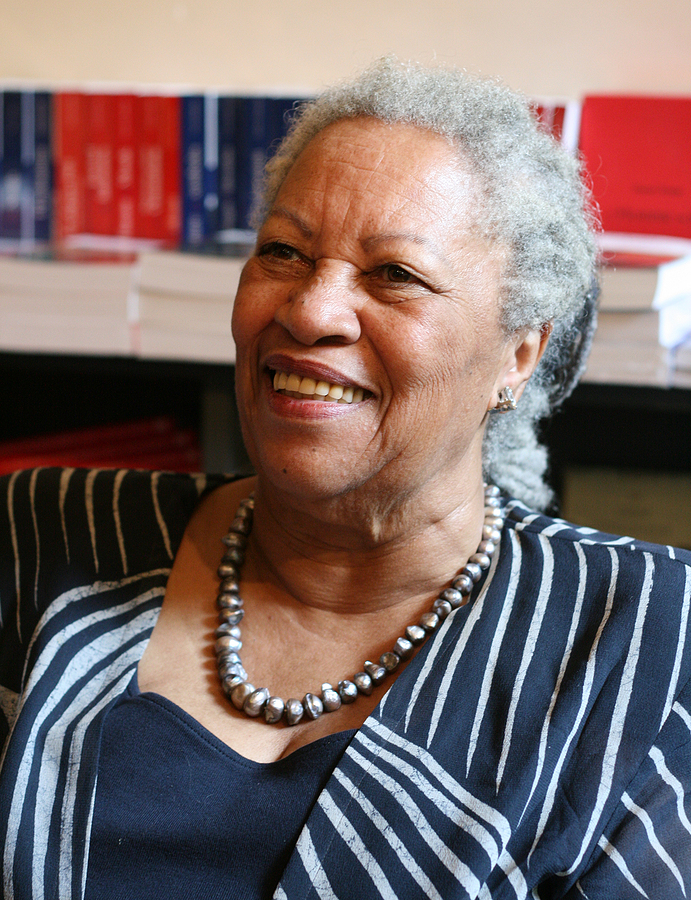In Toni Morrison’s 196-page masterpiece, she tells a tale of profound human complexities and the intricacies of power, freedom, and mercy.
A Mercy delves into the psychological and experiential dimensions of enslavement, examining its impact on women and exploring the intricate impact of these crises on the dynamics of relationships between men and women.

Morrison’s beautifully profound story is, as usual, told through a mosaic of voices, giving each character a turn to tell their story in alternating chapters, while simultaneously trapping each character inside their biographies.
At first, the story centers around Jacob Vaark, an Anglo-Dutch trader who becomes tempted by the invisible hand of the free market after witnessing the riches of sugar, molasses, and rum, all driven by mass slave labor.
However, his narrative becomes quickly entwined with Rebekka, Florens, Lina, and Sorrow, creating a rich tapestry that explores the impact of suffering on women and the complex journey toward redemption.
Each woman appears imprisoned within the confinements of her thoughts and the binding of her grim, yet unavoidable destiny.
Rebekka, transported from England after being sexually harassed as a domestic servant, faces the grim choice of ‘servant, prostitute, or wife,’ and is forced to marry Vaark due to her father’s wishes.
Lina, having witnessed her tribe’s demise due to a plague, clings to ‘the Mistress’ as the sole semblance of stability in her shattered world. Lina was sold to Vaark by the Presbyterians after being ruthlessly abused by her lover.
Sorrow, the sole survivor of a shipwreck, changes her name various times throughout the novel, manifesting a “Twin” of herself to aid her tortured psyche and comfort her after she becomes pregnant at the age of eleven and is adopted by Vaark.
Florens exchanges one form of enslavement for another and is reluctantly sold to Vaark by her mother to settle a debt, and falls in love with the Blacksmith only to subject herself to a destructive, all-consuming relationship that leaves her grappling for her humanity.
Morrison tells a story of hardship woven through the experiences of these women, each grappling with the burdens of their pasts and the oppressive forces that dominate their lives.
Rebekka’s struggle with illness, Florens’ enslavement and unrequited love, Lina’s shift from her indigenous roots, and Sorrow’s journey through motherhood in a world of uncertainty all contribute to the intricate pattern of pain.
However, within the heartbreaking moments of anguish, Morrison also incorporates themes of redemption. The concept of mercy, as the title suggests, weaves its way through the narrative, challenging traditional notions of compassion and kindness.
She drives this idea home in the final chapter of her novel, in a letter to Florens from her mother. In this final chapter, Florens’ mother tells the story of her treacherous abuse and rape, which all lead to the moment in which she gave Florens away.
Florens had lived her whole life believing that her mother had given her away merely to settle her debt, but her letter changed everything.
Her mother knew that if Florens stayed with her she would be subjected to the same abuse and hardships that she had faced and that if she went to live with Vaark she might have a chance to lead a better life.
In her mother’s eyes, the mercy she received was not an otherworldly miracle but a deliberate act of kindness from a fellow human being.
This revelation highlights the agency of individuals in offering compassion and altering the course of another’s life. Morrison uses the act of mercy as a powerful symbol of resilience and compassion in a world where brutality and exploitation seem pervasive.
Throughout the book, Morrison tells stories of horrific abuse, rape, heartbreak, and loss. However, this final act of mercy becomes a beacon of hope, reminding readers that, even in the bleakest circumstances, the potential for kindness remains.
While we don’t know exactly what urged Vaark to grant Florens this mercy, we know that in this singular act, a glimmer of humanity emerges from the shadows of cruelty.
Morrison’s deliberate choice to conclude the novel on a note of mercy underscores a deeper theme — the enduring capacity for compassion within the human spirit.
Morrison invites readers to recognize the subtle acts of humanity that persist in the face of cruelty. She leaves the reader with morsels of hope. Maybe not hope for the characters themselves, but hope for humanity.
This message remains prevalent 15 years after the novel was first published. Against the backdrop of current events issues, such as the Israel-Hamas War and its complexities, our community grapples with escalating tensions.
Within this tense atmosphere, individuals are resorting to posting hateful, demoralizing content online, directing malicious remarks at one another, and targeting individuals who follow different belief systems from their own.
It’s incredibly depressing to see individuals turn on each other so quickly, especially amidst heightened tension and conflict.
In such moments, the importance of compassion and mercy becomes glaringly evident. Morrison’s call to recognize the subtle acts of humanity serves as a poignant reminder that even amid conflicting debate, embracing compassion and extending mercy is necessary.
By promoting a culture of empathy and kindness, we can aspire to rebuild connections and bridge the gaps that emerge during challenging times, fostering a community that prioritizes mutual respect and shared humanity.



